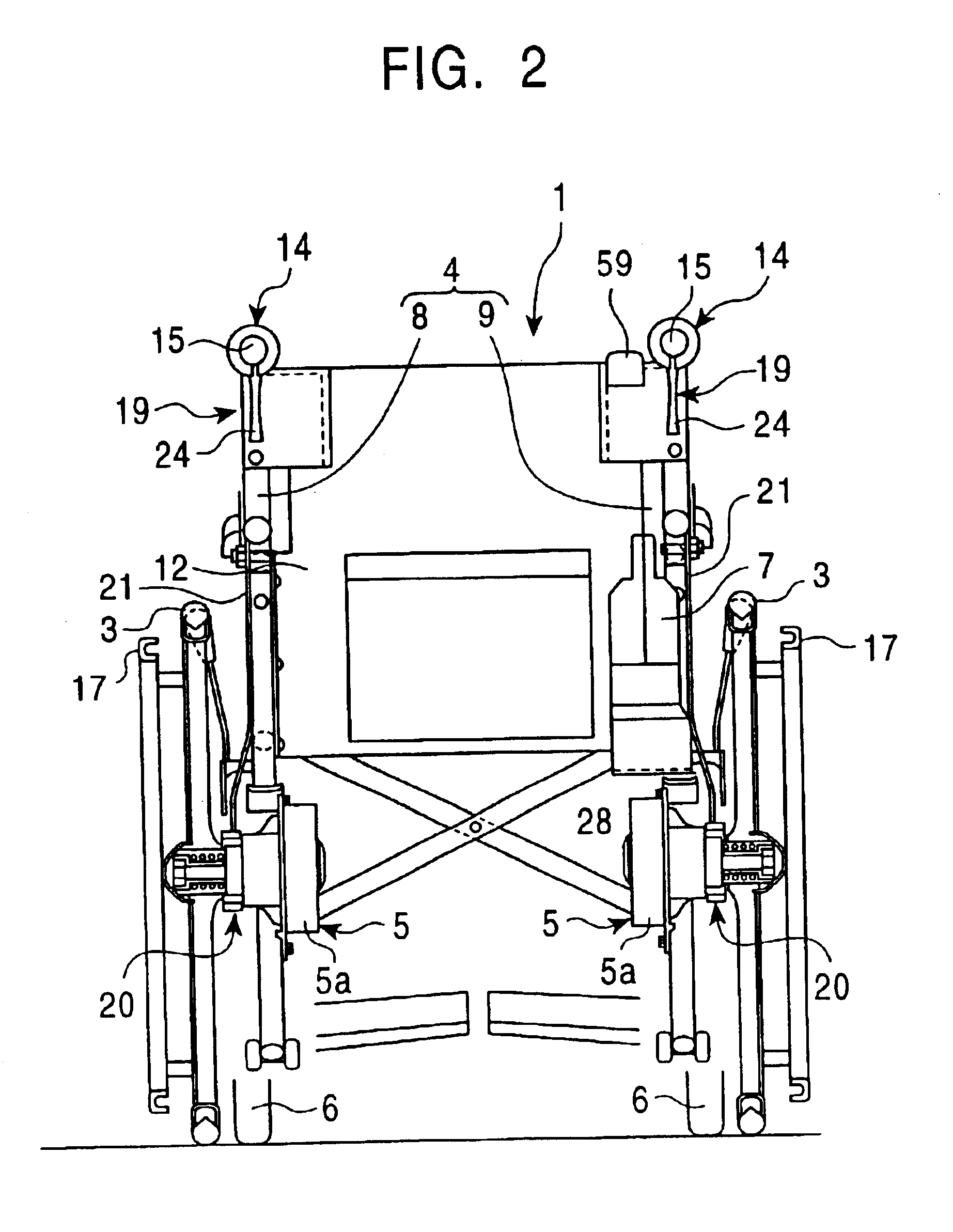Electric-powered vehicle
a technology of electric vehicles and brakes, applied in the direction of electric propulsion mounting, wheelchairs/patient conveyances, transportation and packaging, etc., can solve the problems of increasing the load of brake operation, affecting the operation, and affecting the operation stability, so as to improve the handling of brake operation detectors
- Summary
- Abstract
- Description
- Claims
- Application Information
AI Technical Summary
Benefits of technology
Problems solved by technology
Method used
Image
Examples
Embodiment Construction
A preferred embodiment of the present invention is described below with reference to the accompanying drawings.
FIGS. 1 and 2 are a side view and back view of an electric-powered wheelchair 1 as an example of an electric-powered vehicle. The electric-powered wheelchair 1 has a wheelchair body 2 and right and left wheels (driving wheels) 3 provided on the right and left sides of the wheelchair body 2. The wheelchair body 2 includes wheelchair frames 4 and a pair of right and left electric-powered drivers 5 which each include a motor and a speed-reducing mechanism in a housing 5a.
The right and left wheels 3 as the driving wheels are attached to the electric-powered drivers 5. The wheels 3 are rotated by driving forces generated by the electric-powered drivers 5, and the driving forces are used as part of propulsion for the electric-powered wheelchair 1. Each driving force is called the “assisting driving force”. The wheelchair body 2 has, in its front part, a pair of right and left ca...
PUM
 Login to View More
Login to View More Abstract
Description
Claims
Application Information
 Login to View More
Login to View More - R&D
- Intellectual Property
- Life Sciences
- Materials
- Tech Scout
- Unparalleled Data Quality
- Higher Quality Content
- 60% Fewer Hallucinations
Browse by: Latest US Patents, China's latest patents, Technical Efficacy Thesaurus, Application Domain, Technology Topic, Popular Technical Reports.
© 2025 PatSnap. All rights reserved.Legal|Privacy policy|Modern Slavery Act Transparency Statement|Sitemap|About US| Contact US: help@patsnap.com



